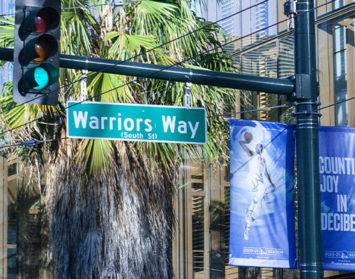Unless you’re in the gasoline business, the customer is a — if not the — key player in the marketplace where goods and services are sold. Basic economics teaches that a healthy and vibrant market is one that offers robust competition and choices from which consumers can choose.
So it is in the office market these days — despite what office building landlords and their spin machines may be telling their customers, office space tenants. I’ve been appalled to read continuing accounts in the media of how little office space there is for tenants in the San Diego metropolitan area and how high the price tag is for what space there is that is “available.”
Note the use of quotation marks around “available.” Landlords and their agents are using the concept of “vacant” space synonymously with “available” space to brow-beat their tenant customers into taking it or leaving it. Simply put, “It ain’t so.”
The term “vacancy,” in the context of leaseable space, literally means space that is available right then and there for lease. Vacancy rates have been used for decades by developers, investors, lenders, brokers and others in the real estate capital markets to determine when to buy, sell and develop, and what the leasing rates should be. However, vacancy rates are static in nature — they are, in effect, a snapshot of what is not being occupied at a given moment in time. They don’t take into account more fluid data that would provide a better look at the office space market.
Truth is, vacancy rates are not all that reliable as a barometer of the health of the real estate, as evidenced by the continuing miscues that result in historic boom and bust markets with over-building occurring at the back end of every business cycle. That’s the problem for developers and landlords, though, not for the tenant looking for space.
When more sophisticated corporate tenants go shopping to lease space, they look not only at vacant space but other available space that could meet their needs. Available space includes those spaces not presently vacant, including future space that is under construction or space that the present tenant will be vacating in the months to come.
Since most tenants shopping for space are not ready to occupy the space immediately, the available space quotient is the better and more merciful indicator of what space tenants can consider for their office needs. And when you factor future vacancies into the equation, it begins to restore the balance of power between the landlord and prospective tenant, which, I hasten to add, is as it should be.
Let’s take a look at the various San Diego regional office markets to put the so-called office space availability crisis into perspective and quash the take-it-or-leave-it bullying tactics being used by landlord brokers.
According to information dated May 17 from the independent data research company, CoStar, 13 percent of downtown San Diego’s total office space is vacant, with an average vacancy of 21.8 months — nearly two years. Even more shocking is that 19 percent of downtown’s Class A office is available with an average vacancy interval of 21.4 months. These are not statistics that shout “Landlord’s Market!” as many would like you to believe.
In Mission Valley, the office space availability rate is 19 percent. Kearny Mesa’s office space inventory currently is experiencing 11 percent availability. In the UTC area, the available office space comprises 16 percent of the Class A building inventory that stays on the market an average of 11.8 months.
The availability rates are pretty much the same in the North City and North County areas. Sorrento Mesa currently has a 25 percent availability rate with vacant space staying on the market an average of 11 months. Del Mar Heights/Carmel Valley is experiencing a 14 percent availability rate with the average time on market of 12.6 months. In Carlsbad, there is a 16 percent availability in Class A office space with vacant space staying unleased an average of 19.7 months.
The point is this: There is an abundance of space available and a good portion of it sits vacant on the market for considerable lengths of time. That’s not good for landlords who are carrying the operating and other monthly costs of their buildings with or without tenants. And, it’s not good for tenants who are being told there’s no “room at the inn.”
So, here’s an idea. In downtown San Diego, where the average time-on-market interval is nearly 22 months, the landlord could provide 18 months — still less than the average vacancy time — in free rent to capture a tenant. The tenant could pay the variable occupancy costs such as janitorial service and utilities during that initial period before assuming the total cost of a fair and equitable leasehold. The landlord gains a customer with no additional variable costs and the tenant-customer gets a valuable incentive.
A win-win situation. Imagine that.
Jason Hughes is founder of Hughes Marino, an award-winning commercial real estate company with offices across the nation. A pioneer in the field of tenant representation, Jason has exclusively represented tenants and buyers for more than 30 years. Contact Jason at 1-844-662-6635 or jason@hughesmarino.com to learn more.










